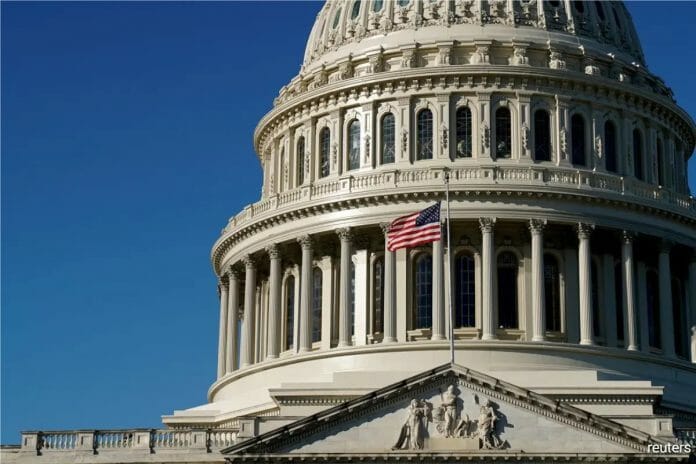The United States insists on assuming leadership in many areas yet neglects to accept responsibility when things go wrong. America must acknowledge that its debt crisis extends beyond its borders. Ignoring that reality is a price too heavy to pay in this age of global economic interdependence.
The fact of the matter is, for a long time, U.S. treasuries have been considered as so-called “safe haven assets.” However, the U.S. fiscal and monetary authorities have merely focused on America’s own policy goals, forcing drastic dollar fluctuations and distorting economic cycles, which causes a serious spillover into the financial sector.
Some have said the U.S. self-imposed debt limit is no more as the world’s richest debtor, can never satiate its unchecked spending appetite by unceasingly borrowing from overseas. Hence, the recurring debt problem has become an incurable toxic addiction.
The U.S., as the world’s largest economy whose currency still holds a dominant position globally, thus has an unshakable responsibility to fix its debt problem in a responsible fashion. But each time its debt addiction strikes, America’s nasty domestic partisan politics and debt brinksmanship will uniformly make matters worse, sending shockwaves across the global markets and putting the whole world on tenterhooks. The ongoing crisis is no exception.
After months of political tug-of-war, U.S. President Joe Biden and House Speaker Kevin McCarthy reached an agreement on Sunday on raising the debt ceiling. If approved by the U.S. Congress later this week, it would be the 103rd time the country raises its debt limit in the post-war era.
While the deal may have for the moment helped the country avert a destructive debt default, and allow the world to breathe a sigh of relief, U.S’s deep-seated debt problem remains unsolved and is always ready to come back and haunt the world someday.
U.S’s national debt clock is ticking. The swelling debt, more than 31.4 trillion U.S. dollars now, is a credibility challenge for the world. Facing the skyrocketing numbers, nations across the globe have become increasingly anxious about the United States’ ability to repay its bills in the long run.
The greenback is the most commonly held reserve currency, making up more than 60 percent of global foreign exchange reserves. Theoretically, the United States, with its dollar supremacy, can continue to issue new bonds to pay off the old debts as long as its government revenues can cover the interest payments. However, that is highly unsustainable.
The ratio of government debt in gross domestic product (GDP) is an important indicator of a country’s ability to settle its debts. The U.S. Congressional Budget Office predicts that the proportion will reach 185 percent in 2052.
And by 2053, net interest will consume approximately 7.2 percent of America’s GDP — nearly 40 percent of federal revenues. Such a trajectory will cause more serious concerns for the viability of U.S. debts and the dollar’s real purchasing power, creating mounting uncertainties in the world market.
The U.S. debts, with an ever shrinking credibility, have become a major source of risks in the global financial market. Take the fall of the Silicon Valley Bank. On the surface, the bank suffered a devastating run-on deposit issue because of a liquidity crisis. Yet, the real reason is that the value of assets that the bank had bought during the low-rate cycle plunged due to the Federal Reserve’s aggressive hike of interest rates, some expert believe.
Since March last year, the Fed has raised interest rates 10 times in a row in an effort to curb inflation. Total book losses on bonds held by all U.S. banks ballooned to about 620 billion dollars at the end of 2022, according to the Federal Deposit Insurance Corporation.
If the United States continues on this path, the cyclical debt crisis will threaten global financial security and the viability of the global economy over the long haul. Everyone knows that it is a dire problem, yet nothing substantial has ever been done about it.
It is true that the White House and the U.S. Congress over the years can always come up with some sort of temporary solutions to the debt ceiling. Compromises are not always guaranteed and defaults not completely avoidable. If a U.S. default does happen, it could trigger a recession in America, and take a heavy toll on the world economy, many analysts worldwide have concurred.
Solving America’s debt problem demands a systemic and long-term approach. Such sensible solutions for America to wean itself off its debt addiction include curbing the country’s already behemoth and still rising military expenditures, ending the economy’s over-financialization and refraining from abusing extreme monetary policies like quantitative easing, among others.
“In my eyes, we’re playing Russian roulette with the United States’ credit,” Jeff Tomasulo, CEO of Vespula Capital Management and Tactical Income, said.
The debt ceiling is the legal cap that Congress sets on the amount that the Treasury can borrow. It does not authorise any new spending; it simply lets the government pay for what Congress has approved. The debt ceiling came into being in 1917; before then, Congress tended to authorise borrowing for specific purposes. But when raising money to support America’s entry into the first world war, Congress granted the Treasury more flexibility, eventually setting a comprehensive debt ceiling in 1935.









